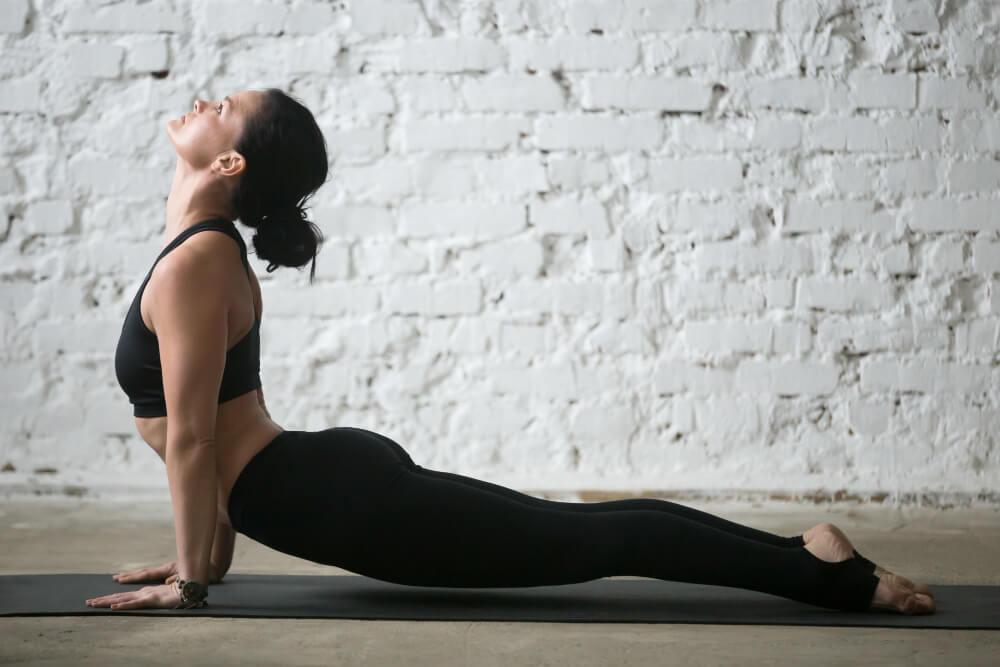Cracked Up? Don’t Crack Out! 3 Exercises to Heal Your Herniated Disc
That nagging ache, the sharp pang shooting down your leg, the sudden inability to tie your shoes without wincing – the herniated disc has arrived, uninvited and unwelcome. But before you surrender to a life of pain and limitations, take a deep breath and grab your metaphorical armor. This guide is your battle cry, your secret weapon in the fight against disc pain. We’re not about to throw pills and braces at the problem; we’re about to unleash the power of movement, your body’s natural healing force.

So, ditch the despair and embrace the warrior spirit. We’ll begin by demystifying the herniated disc, untangling the science behind this sneaky injury. We’ll then debunk the myth of pain meds as the only solution, revealing why targeted exercises are your true allies in this journey. Finally, we’ll equip you with three potent exercises, each a powerful strike against pain, strengthening your core and paving the way for a faster, more complete recovery.
From Crack to Comeback: Understanding Your Disc Warrior
Imagine your spine as a stack of building blocks – the vertebrae. Between them lie cushions of jelly-like tissue called discs. When pressure or stress pushes one of these discs out of place, it “herniates” and can irritate nearby nerves, sending pain messages to your brain. That’s the unwelcome guest you’re dealing with.
But here’s the good news: your body is not a passive victim. It possesses an incredible healing potential, and movement is its key weapon. By engaging in specific exercises, you can:
- Strengthen your core muscles: Your core acts like a natural corset for your spine, taking pressure off the discs and reducing pain.
- Improve flexibility and mobility: Gentle movements lubricate your spine and joints, promoting pain relief and preventing future issues.
- Boost blood flow: Movement brings fresh nutrients to the injured disc, accelerating its healing process.
Beyond the Brace: Exercise as Your Superhero Ally
Pain meds might offer temporary relief, but they treat the symptoms, not the cause. They can also have side effects and mask the progress of your healing. Exercise, on the other hand, tackles the root of the problem, building strength, flexibility, and resilience. It’s not just about pain relief; it’s about reclaiming your life, your movement, your joy.
Finding Your Perfect Fit: Choose Your Weapons Wisely
Not all exercises are created equal, especially when it comes to disc injuries. Some can aggravate your condition, while others can work wonders. It’s crucial to choose exercises that are:
- Gentle and controlled: Avoid jerky movements or heavy lifting. Start slow and gradually increase intensity as your pain improves.
- Focused on core strengthening: Prioritize exercises that target your core muscles, like planks, bridges, and bird-dogs.
- Tailored to your specific needs: Consult your doctor or a physical therapist to design a program that addresses your unique injury and pain level.
Unleashing the Power of Movement: Your 3-Step Recovery Plan
Now, let’s get down to business! Here are three powerful exercises, your personal squad against disc pain:
- Core Crusader:The StabilizerLie on your back with knees bent and feet flat on the floor. Engage your core and gently press your lower back towards the floor. Hold for 5 seconds, then relax. Repeat 10 times. This exercise strengthens your core, your spine’s natural armor, reducing pressure on the disc.
- Cat-Cow Commander:The Spinal FlexorStart on all fours, hands shoulder-width apart and knees hip-width apart. As you inhale, arch your back and look up. As you exhale, round your back and tuck your chin to your chest. Repeat 10 times. This gentle movement promotes spinal flexibility, reducing nerve irritation and pain.
- Bridge Builder:The Strength ArchitectLie on your back with knees bent and feet flat on the floor. Engage your core and press your heels into the floor, lifting your hips off the ground until your body forms a straight line from shoulders to knees. Hold for 5 seconds, then lower. Repeat 10 times. This exercise strengthens your core and glutes, stabilizing your spine and reducing disc pressure.
Remember, these are just the first steps on your recovery journey. Listen to your body, rest when needed, and celebrate each milestone. You are not alone in this fight – a supportive community of fellow warriors awaits you.

